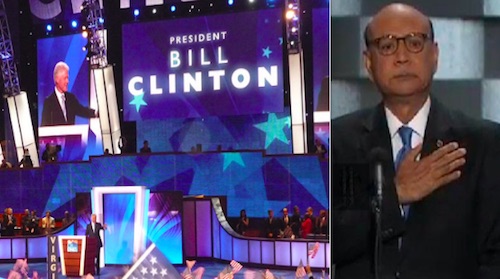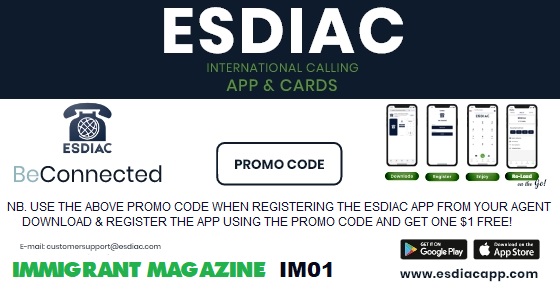An (Ethnic Media Services) EMS briefing recently addressed the troubling impacts of language barriers on healthcare access, particularly for non-English-speaking patients in the United States. The reasons for concern are outlined, with over 14 million people lacking basic English skills, leading to limited access to healthcare and poorer health outcomes for non-English-speaking individuals. As the number of such patients is projected to increase in the US, finding innovative solutions to facilitate communication between clinicians and patients becomes essential.
The briefing is organized in collaboration with Stanford CARE and features notable speakers, including Dr. Latha Palaniappan, Co-Founder of Stanford CARE; Dr. Ingrid J. Hall from the Division of Cancer Prevention and Control at the Centers for Disease Control and Prevention; and Dr. Elena V. Rios, President & CEO of the National Hispanic Medical Association.
Dr. Palaniappan began the discussion by emphasizing language barriers as a significant social determinant of health. Language barriers occur when healthcare providers and patients do not share a native language. While some doctors may claim language proficiency on their websites, they may not be proficient in medical terms, leading to potential misunderstandings and challenges in providing adequate care.
The presentation highlights the adverse impacts of language barriers on patients with limited English proficiency (LEP). LEP populations face exacerbated health disparities due to factors such as inadequate access to translation services, less health education, worse interpersonal care, and lower patient satisfaction. These challenges lead to increased healthcare costs and delayed or undiagnosed conditions.
Dr. Palaniappan further delves into the racial and ethnic diversity in America, illustrating the growing number of non-English speakers in the country. The most common languages spoken at home, apart from English, include Chinese, Korean, Vietnamese, Spanish, and Russian.
The speaker emphasizes the need for qualified interpretation services, which are mandated by the government under Section 1557 of the Affordable Care Act (ACA). Utilizing in-person interpreters combined with telephone or video-based interpretation can improve healthcare delivery and patient safety for LEP patients.
To address these issues, solutions proposed include translating materials into patients’ preferred languages, integrating HIPAA-compliant translation tools, and considering cultural nuances when communicating with patients and planning treatments. Additionally, the presentation highlights the importance of making clinical research accessible to LEP populations through translated consent forms and innovative methods such as chat GPT.
In response to a question from the audience, Dr. Palaniappan clarified that the ill effects of language barriers affect both elderly and younger populations similarly. There is currently no specific data separating the impacts on the elderly versus younger age groups.
Dr. Elena Rios, President of the National Hispanic Medical Association, made a significant contribution during the EMS briefing by emphasizing the importance of addressing systemic barriers in the healthcare system related to language and cultural diversity.
Dr. Rios pointed out the lack of racial concordance between doctors and patients as a problem. She highlighted that when patients, especially the elderly, get sick, they often revert back to their native language. Therefore, having language services available is crucial for effective communication and quality care.
She discussed the need to change the healthcare system to reimburse language services for providers, hospitals, clinics, and doctors’ offices. Considering the rise of telemedicine due to COVID-19, Dr. Rios also stressed the importance of providing language services for telemedicine platforms.
During her presentation, Dr. Rios mentioned several congressional laws and initiatives aimed at improving language access in healthcare. These include the laws introduced by Congresswomen Judy Chu and Grace Meng and Congressman Jimmy Gomez. These initiatives aim to increase resources for training and childcare, improve mental health services for underserved communities, and enhance language services for Medicare beneficiaries.
Dr. Rios also highlighted efforts in California, where there is a focus on recognizing bilingualism in high school diplomas and the possibility of implementing language testing requirements for medical and nursing students. She further emphasized the need for more doctors and nurses from countries with populations that speak languages needed in the United States, such as Spanish.
Moreover, Dr. Rios stressed the importance of reimbursing language services, especially in underserved communities, to increase access to healthcare for individuals with limited English proficiency and diverse cultural backgrounds. She called for more community health workers and volunteers who can effectively communicate with and serve patients in their native languages.
In conclusion, Dr. Elena Rios’ presentation highlighted the critical need for comprehensive efforts to address language barriers and improve language access in the healthcare system. Her focus on cultural sensitivity, community engagement, and equitable access to healthcare underscored the importance of breaking down language-related barriers to ensure quality care for all patients, regardless of their linguistic and cultural backgrounds.
Dr. Ingrid Hall from the CDC presented an analysis exploring the association between limited English proficiency (LEP) in Hispanics and their access to healthcare services and cancer screenings.
Data was pulled from the Medical Expenditure Panel Survey, a nationally representative survey on healthcare use, expenditures, and quality of care.
The analysis found that Hispanics with limited English proficiency had poorer access to healthcare services compared to non-Hispanic whites and Hispanics who spoke English well.
Hispanics with limited English proficiency reported lower percentages of having a usual source of care and receiving preventive services like blood pressure checks, flu shots, and dental visits.
However, Hispanics with limited English proficiency had higher rates of breast and cervical cancer screenings compared to non-Hispanic whites, possibly due to CDC’s National Breast and Cervical Cancer Early Detection Program, which screens low-income and uninsured women for free.
Language assistance and culturally and linguistically appropriate care can help reduce health disparities for Hispanics with limited English proficiency, but eliminating disparities for all Hispanics may require addressing other social determinants of health like education and insurance coverage.
Dr. Hall emphasized the importance of improving health literacy and addressing barriers to care, such as discrimination and bias.
For more information on CDC’s breast and cervical cancer screening program, visit the link: cdc.gov/cancer.
Overall, the presentation highlighted the need to address language barriers and cultural considerations to improve healthcare access and outcomes for limited English proficiency populations, particularly Hispanics.
Overall, the briefing shed light on the critical issue of language barriers in healthcare access, providing valuable insights into the challenges faced by non-English-speaking patients and potential solutions to improve their health outcomes.
#LanguageBarriers #HealthcareAccess #NonEnglishSpeakingPatients #MedicalCommunication #LimitedEnglishProficiency #HealthcareDisparities #CulturalDiversity #InterpretationServices #HealthcareOutcomes #LanguageServices #HealthcareSystem #DiverseCommunities #LanguageAccess #PatientSatisfaction #HealthcareCosts #MedicalEducation #CulturalNuances #CommunityHealthWorkers #Telemedicine #HealthcareResearch #SocialDeterminantsofHealth









